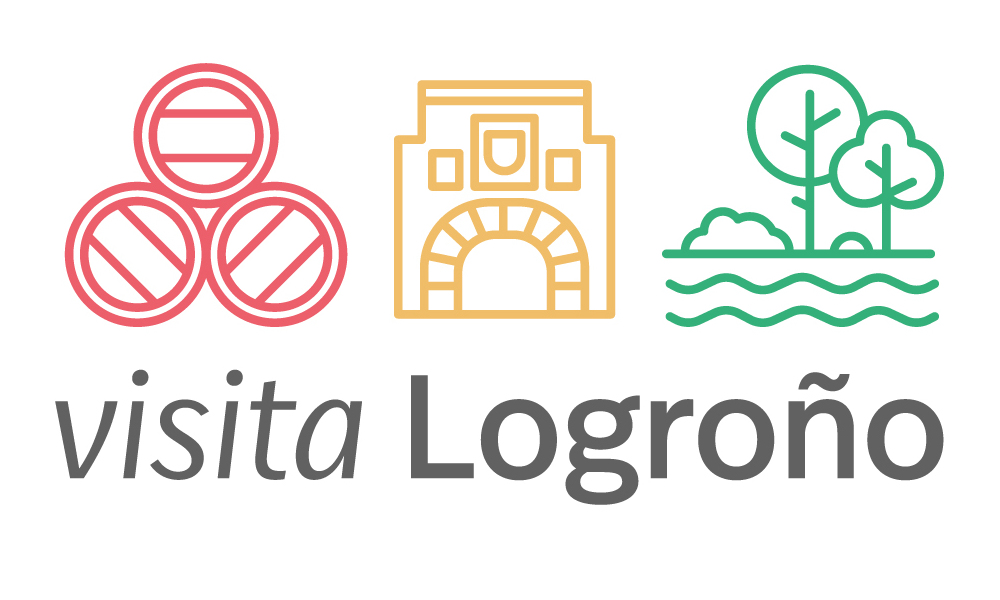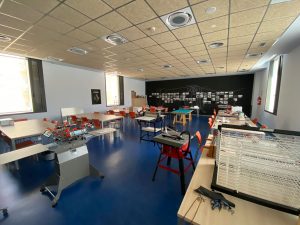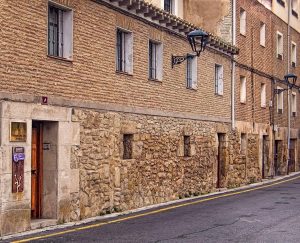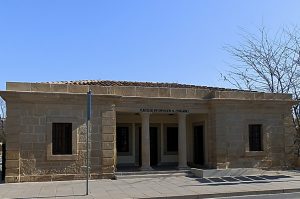
The Cubo del Revellín and City Walls are the remains of the medieval fortifications of Logroño. The Cubo del Revellín (tower located in the northwestern corner of the old walls) and the west gate are well preserved.
TheCubo del Revellín reveals an upper cylinder where the cannon ports were located, housing the slits for the guns and soldiers. At the bottom there was a powder keg where ammunition and cannons were stored.
Its typology is that of a gunner cube, articulated around a triple platform formed by the combination of a parapet and two firing galleries with gunholes, the upper one without a permanent roof and the lower one under a flat vault, both destined to harass the assailants.
Its facilities were complemented by the adjacent Casa de la Artillería (Artillery House), the building where ammunition and military supplies of all kinds were stored. El Cubo and its surroundings are without a doubt the best preserved sectors of the 16th century walls of Logroño.
Due to its chronology and particular characteristics, the Cube enters fully into what is called “transitional fortification”, that is, the phase that mediates between medieval architectural modes and modern constructions, already adapted to the war with firearms and heavy artillery.
Revellin Gate
The Puerta del Camino (Camino’s Gate, denomination that appears in old documents when referring to the current Puerta del Revellín) along the Camino de Santiago, is also known by the names of “Puerta de Carlos V” and “Puerta Nueva”. Its construction was completed around 1524.
Above the Puerta del Camino we can see the double-headed eagle emblem of Carlos I of Spain together with two shields of Logroño with the three fleurs-de-lis. These were granted by the monarch to the city in 1523 for defending the siege of the French troops two years earlier.
Regarding the history of Logroño, this was the main Castilian stronghold on the border with Navarra.
The most important works of fortification of the city took place between 1498 and 1540, reinforcing the old medieval wall, but it was not until the siege of the French in 1521 when the improvement works were promoted, expanding the wall and building the Cubo del Revellín.
The Cubo del Revellín was built between 1522 and 1524 under the direction of the master stonemason Lope de Insturizaga and financed through the exemption of certain taxes by Emperor Carlos I, who would thus reward the resistance offered by the people of Logroño against the siege in 1521.
During the San Bernabé festivities, the Cofradía del Pez (Brotherhood of the Fish) distributes fish, bread and wine among the citizens.
This celebration conmemorates the siege to which Logroño was subjected by the French army in 1521 and the miseries endured by the inhabitants who fed on fish captured secretely in the Ebro river.
From the second half of the 16th century, the defense of the city progressively lost importance and the deterioration of the walls begun. Private buildings were built attached to it and some od the big stones served to construct bridges an other facilities.
The unusual preservation of the Cubo and the Puerta del Camino is not only the consequence of their constructive solidity, far superior to that of the rest of the old fortified walls, but is also related to the factors that guided the urban development of the city.
Calle Once de Junio, 6. 26001 Logroño.
Free entrance.
Wednesday : 10:00 a 13:00 h.
Thursday and Friday: 10.00 a 13:00 h. / 17:00 a 20:00 h.
Saturday: 11:00 a 14:00 h. / 17:00 a 20:00 h.
Sunday : 11:00 a 14:00 h.
Information and reservations. La Rioja Tourism Office. 50 Calle Portales. Tel. +34 941 29 12 60



